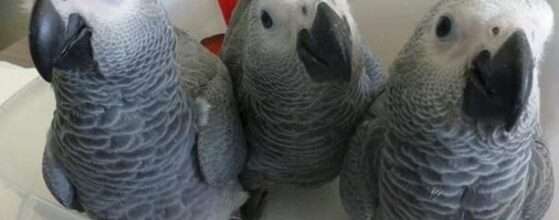
- by FPABS-Admin
- 0
- Posted on
African grey diet in the wild
African grey diet in the wild discover the secret to your African grey parrot’s health and happiness! African grey parrots are renown for their exceptional talking abilities, but did you know that their dietary needs set them apart from other birds? Explore the fascinating world of the African grey diet and uncover how it differs from that of other avian companions, such as parakeets or cockatiels. Your parrot’s well-being is at the heart of this journey, so read on to unlock the key to a healthier, happier feathered friend.
What do wild African grey parrots eat?
African Grey Parrots: Herbivores of the Wild
African grey parrots feel right at home in the lush lowland rainforests across Africa. Sometimes, they venture into nearby savannas, mangroves, and even farmlands to find their meals. They’re not big fans of solo dining; they usually gather in groups, keeping it cozy with fewer than 50 flockmates.
When it comes to their diet, these parrots are all about the fruits, seeds, and nuts. They’re not too picky and enjoy a variety of treats from different plants like Bombax, Ficus, Macaranga, and Raphia. But if they had to pick a favorite, it’d be the fruit of the oil palm tree.
To add some flair to their menu, they also snack on flowers, bark, and small critters like insects and snails. Surprisingly, they sometimes head to the ground to nibble on clay and soil, which scientists believe helps with nutrition and keeping those pesky parasites away.
Access to Beta Carotene and Calcium-Rich Foods
Picture the African grey parrots in their wild homes, enjoying a daily dose of superfoods that keep them strong and healthy. Their diet is like a treasure chest filled with delicious treats that provide the nutrients they need.
One of the stars in their menu is beta carotene, which is found in vibrant fruits especially red palm fruit. Beta carotene is like magic for their feathers and eyes, keeping them colorful and sharp.
And let’s not forget about calcium, the bone and beak booster. These clever parrots munch on leafy greens and various nuts, which are packed with calcium to keep them strong and ready for action.
By learning from their wild diet, we can make sure our African grey parrots are also getting a taste of these incredible superfoods right at home. It’s like giving them a nutritional power-up to lead a happy and healthy life.
What is a good pet African grey diet?

GIF by Diane Burroughs, BirdSupplies.com, Inc. All rights reserved.
Just like us, our African grey parrots need a balanced diet to thrive. Most avian veterinarians recommend starting with a solid foundation of high-quality pellets. Brands like Harrison’s and Roudybush are top picks, as they offer a well-rounded mix of essential nutrients.
Imagine their diet like a pyramid – the BirdSupplies.com bird food pyramid, to be exact. At the base of this pyramid are the nutrient-packed pellets, which should make up the bulk of your parrot’s meals. They provide the core vitamins and minerals your African grey parrot needs for a healthy life.
Now, let’s add some colorful layers to our parrot pyramid. Fruits and veggies are like the next level, offering a rich range of nutrients. Choose from foods like papayas, sweet potatoes, and carrots, which are loaded with beta carotene and give your feathered friend’s diet a nutritional boost.
Fruits such as melons and berries are sweet treats that should be included, but remember to offer them in moderation. The natural sugars they contain can add up quickly.
And for a finishing touch, herbs, edible flowers, bird sprouting seeds, and a touch of red palm oil can enhance your parrot’s dining experience. These add variety to their menu and introduce new nutrients into their diet.
By following this pyramid, you’re creating a diverse and balanced diet that mimics the nutrition African grey parrots enjoy in the wild. It’s like giving your feathered friend a taste of the wild while ensuring they stay healthy and happy at home.
